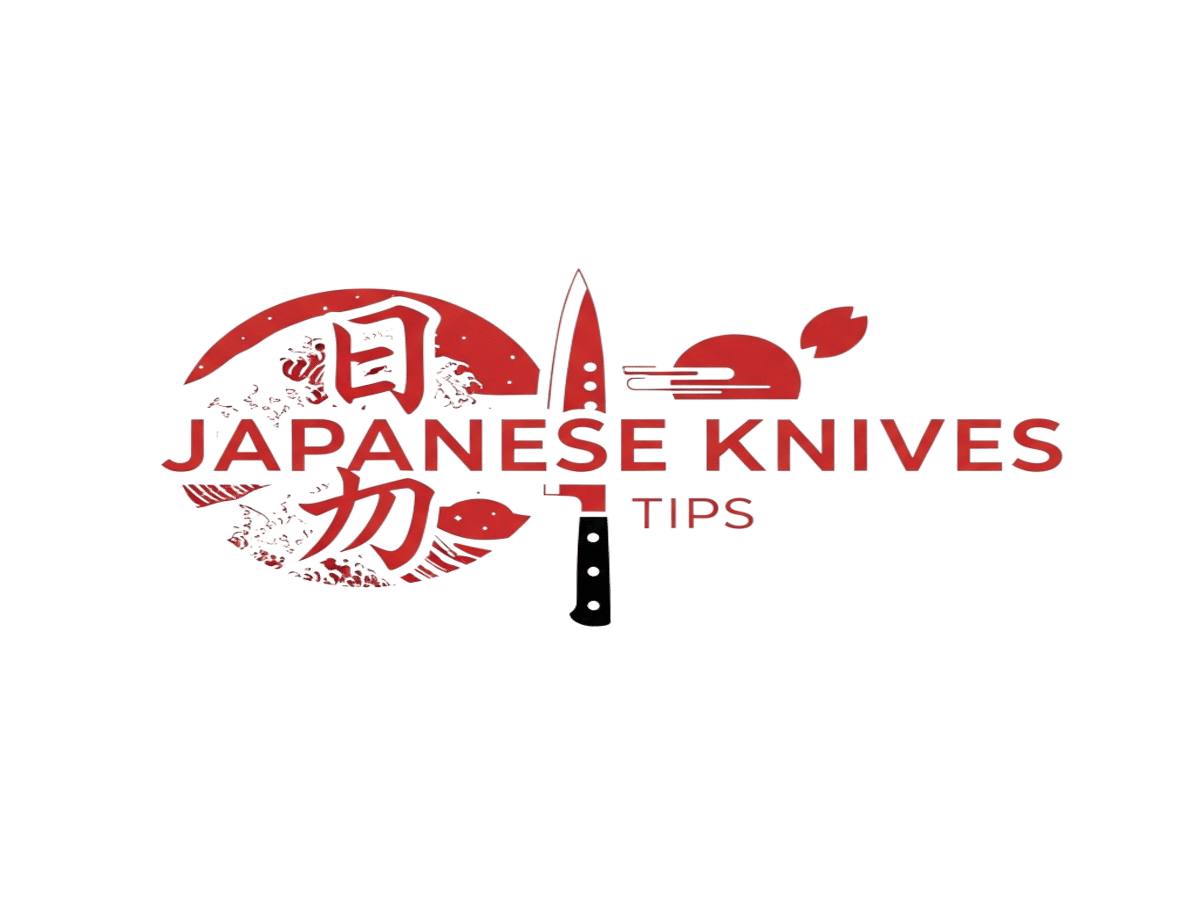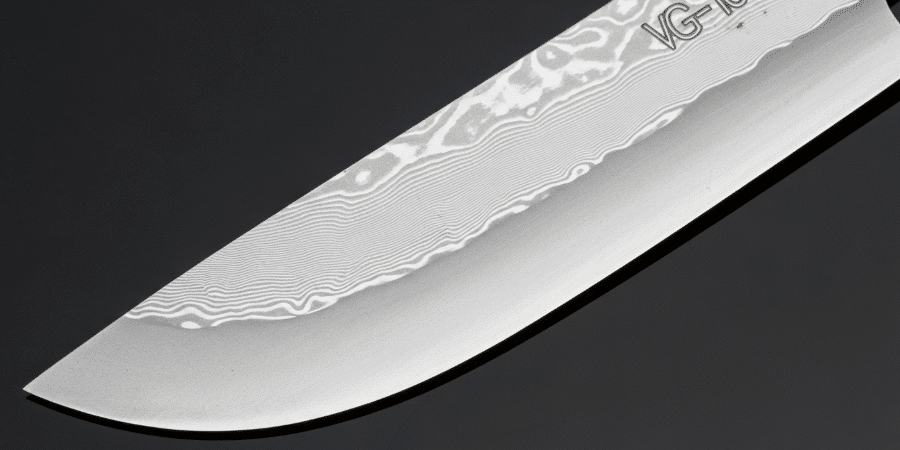VG 10 steel is one of the best choices if you want a knife that stays sharp and lasts long. VG 10 is also known as ‘V Gold 10,’ a name that highlights its premium status and gold-standard quality in the knife industry. I like it because it mixes toughness with good rust resistance, making it a solid pick for kitchen knives and more. This steel is known for holding a sharp edge without needing constant sharpening, which saves time and effort. If you want a knife that performs well and feels reliable, VG 10 steel is worth considering.
- What Makes VG 10 Steel Stand Out?
- VG 10 Steel Basics: What’s Inside?
- Why Heat Treatment Matters
- How VG 10 Steel Works in Kitchen Knives
- Comparing VG 10 to Other Knife Steels
- What Makes Stainless Steels Like VG 10 Important?
- The Knife Market and VG 10 Steel
- Other Steels and Their Uses
- What to Expect from VG 10 Steel Knives
- Edge Sharpness and Maintenance
- Taking Care of Your VG 10 Steel Knife
- Why VG 10 Steel Is a Smart Choice
- Final Thoughts on VG 10 Steel
- FAQs about VG 10 Steel
What Makes VG 10 Steel Stand Out?
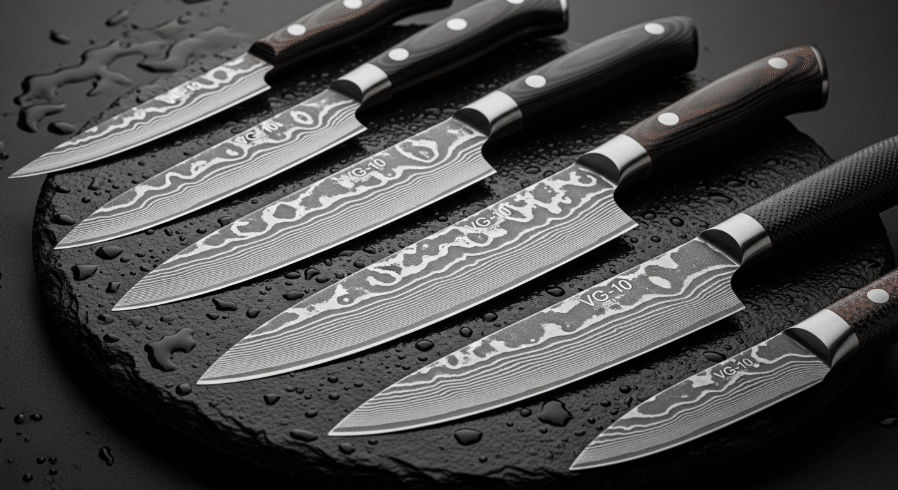
VG 10 steel is a popular choice for anyone looking for a reliable and sharp knife. VG 10 is considered one of the high end steels in the knife market, known for its premium quality and exceptional performance. Right from the start, this steel grabs attention because it blends toughness with sharpness and resists rust better than many other steels. If you’ve ever wondered why so many kitchen knives boast VG 10 steel blades, it’s because this steel delivers a great balance of qualities that make cutting tasks easier and longer-lasting, offering superior edge retention compared to many other steels.
VG 10 Steel Basics: What’s Inside?
VG 10 is a type of stainless steel made mainly in Japan by Takefu Special Steel. It’s got about 1% carbon, which helps it get really hard and hold a sharp edge. Alongside carbon, VG 10 contains roughly 15% chromium, a key player in keeping the blade from rusting or staining. Chromium also forms chromium carbides, which contribute to the steel’s hardness and corrosion resistance. It also has molybdenum, vanadium, and cobalt mixed in, which all contribute to toughness, wear resistance, and edge stability.
The presence of hard carbides, especially vanadium carbides, means the blade’s edge stays sharp longer and handles wear well. The carbide structure—specifically the size, volume, and distribution of carbides—directly affects wear resistance and edge retention in VG 10. Hard vanadium carbides are particularly important for edge retention, as they are among the hardest carbides found in steel. High vanadium content in the alloy further improves wear resistance and helps maintain a sharp edge for longer periods. This steel usually scores around 60 to 61 on the Rockwell hardness scale, which places it among steels with high hardness levels. High hardness allows VG 10 to maintain a sharp edge and resist deformation, benefiting overall cutting performance.
AUS10, often compared to VG 10, is produced by Aichi Steel, a company known for developing high-performance stainless steels with enhanced hardness, durability, and corrosion resistance. The steel produced by different manufacturers, and the specific production methods used—such as conventional or powder metallurgy—can influence properties like carbide size, toughness, and wear resistance. When comparing VG 10 to other steels, some, like AUS10 and Gingami3, have similar properties, making them suitable alternatives depending on the user’s needs.
Why Heat Treatment Matters
One of the secrets behind VG 10’s performance is the heat treat it goes through. Different heat treatments can be used to achieve specific properties in VG 10 steel. This process heats the steel to a high temperature, then cools it down quickly (rapid cooling), and finally tempers it at a lower temperature. This careful balance gives the steel both hardness and good toughness. Through precise heat treatments, higher hardness can be achieved, which improves edge retention and resistance to deformation, but it must be balanced with toughness to avoid brittleness.
If the heat treatment isn’t done right, the blade can lose some of its edge sharpness or become more prone to rust. A properly heat-treated blade can be sharpened to a fine edge and maintain its sharpness longer. So, a good knife maker will pay close attention to this step to make sure the steel performs well.
How VG 10 Steel Works in Kitchen Knives
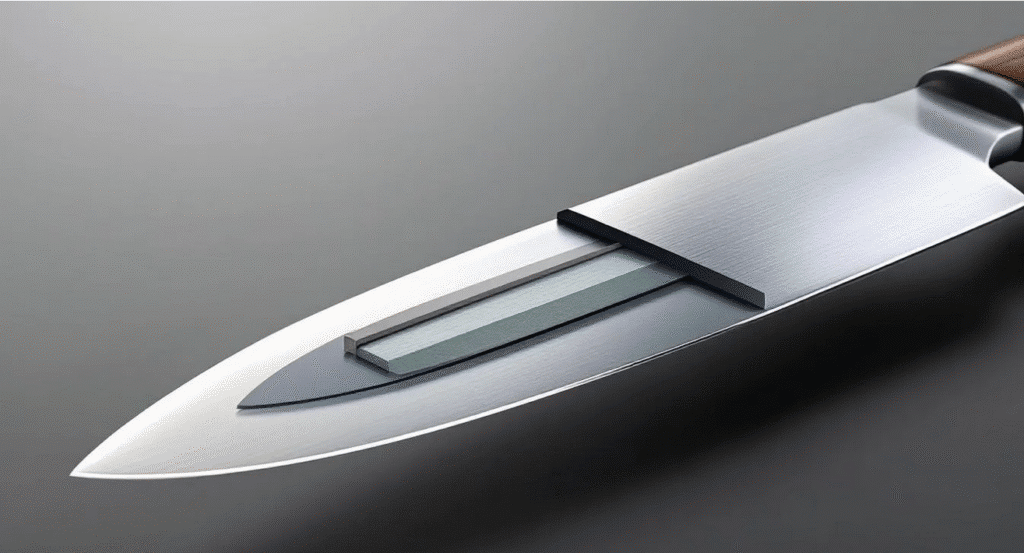
VG 10 steel is a favorite in kitchen knives because it holds a sharp edge that lasts through lots of chopping, slicing, and dicing. VG 10 is also known for its superior edge holding, allowing the blade to maintain its sharpness for longer periods compared to other steels. The high carbon content allows the blade’s edge to be thin and precise, which makes cutting smoother and safer. Plus, the steel’s corrosion resistance means it won’t easily stain or rust, even when working with acidic foods like tomatoes or citrus. VG 10 offers excellent corrosion resistance and stain resistance due to its high chromium content, making it especially durable and low-maintenance in kitchen environments.
Many Japanese chefs trust VG 10 steel knives for these reasons. The steel’s balance of hardness and toughness means the blade won’t chip or break easily, even with daily use. It’s also easier to sharpen than some other super-hard steels, which helps keep the blade in top shape without too much hassle. When sharpening, using proper techniques such as maintaining the correct angle on a whetstone helps preserve the blade’s edge and ensures a refined, durable cutting performance.
Comparing VG 10 to Other Knife Steels
You might hear about other steels like AUS 10 or Gingami 3, which are also popular types of knife steel in Japanese knives. AUS 10, for example, has a bit less chromium and vanadium, so it’s slightly easier to sharpen but not quite as resistant to rust. Gingami 3 can get sharper edges but might require more care to avoid corrosion. These knife steels are evaluated in the same way as VG 10, with attention to properties like edge retention and corrosion resistance.
VG 10 tends to be the go-to for those who want a good steel that balances sharpness, edge stability, and corrosion resistance. Knife makers often choose VG 10 for its balanced properties. It’s often found in both mass-produced knives and high-end custom blades, making it a versatile choice.
What Makes Stainless Steels Like VG 10 Important?
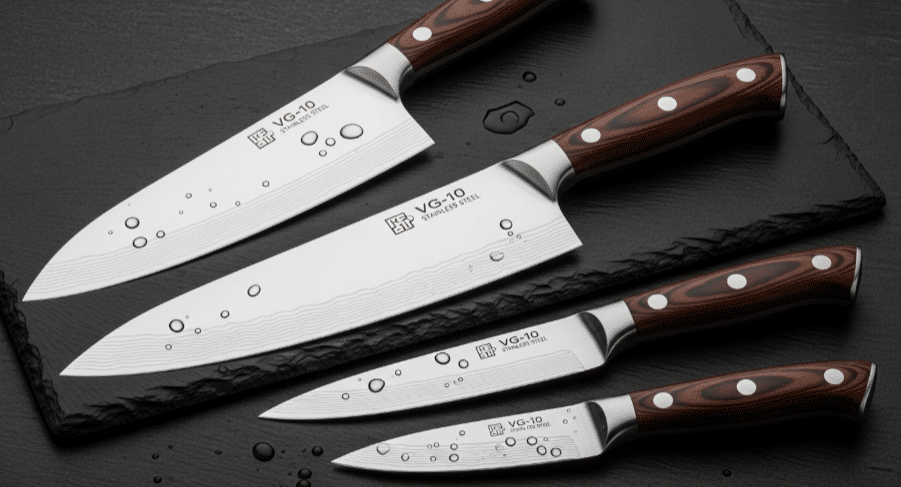
Stainless steels like VG 10 are prized because they resist rust and staining. This is thanks to their high chromium content, which forms a protective layer on the blade’s surface. It’s important to regularly clean and dry the blade’s surface to prevent corrosion and damage, preserving the knife’s quality and performance. For kitchen knives, this means less worry about rust spots or dulling from moisture.
Also, stainless steel knives are easier to keep clean, which is a big plus for everyday use. You can simply hand wash and dry them without special treatments to keep the blade looking and performing well.
The Knife Market and VG 10 Steel
VG 10 steel has earned a solid reputation in the knife market. Whether you’re buying a budget-friendly kitchen knife or a premium custom piece, VG 10 knives are common because they offer good steel properties without going overboard on price.
This steel is popular among professional chefs and home cooks alike. Its balance of edge retention, corrosion resistance, and durability fits well with what most users want in a good knife.
Other Steels and Their Uses
The knife world has lots of steels. Each one is different. AUS10 is special. It’s a high-carbon stainless steel. Why do people love it? Here’s why: it holds an edge great and fights rust well. This makes it perfect for kitchen knives. It works for outdoor knives too. You need a blade that lasts. You need one that won’t rust. AUS10 gives you both. It’s hard but tough. Daily tasks? No problem. Your edge stays sharp longer.
Gingami3 comes from Japan. It’s tough. Really tough. And it resists wear like a champ. High-end kitchen knives love this steel. Chefs need blades that work hard. They need edges that last. Gingami3 delivers. High carbon content? Check. Stainless properties? Check. Want a knife that performs and lasts? This steel is reliable.
D2 steel is different. It’s a high-carbon tool steel. Hard? Very hard. Wear resistance? Exceptional. Mass produced knives use it a lot. Heavy-duty tasks need heavy-duty steel. D2 isn’t as stainless as VG 10 or AUS10. But here’s the thing: it holds an edge under tough conditions. Users who want edge retention love it. Durability matters? D2 delivers.
These steels are all different. AUS10, Gingami3, and D2. Each brings something special. Choosing a knife? Think about what matters most. Edge retention? Corrosion resistance? High toughness? Wear resistance? Understanding these steels helps you pick right. Kitchen work or outdoor projects? The choice is yours.
What to Expect from VG 10 Steel Knives
When using a VG 10 steel knife, you can expect a sharp edge that lasts through many uses. The blade’s edge geometry, combined with the steel’s properties, means you get clean cuts and less frequent sharpening.
Still, all knives need some care. Regular honing and occasional sharpening keep the blade’s edge in shape. Honing realigns the edge without removing material, while sharpening does remove material to restore the edge. Using the right sharpening angle, usually between 15 to 20 degrees, helps maintain the blade’s sharpness without removing too much material.
Edge Sharpness and Maintenance
Sharp knives are key. They make cutting better. The steel matters. But edge geometry matters too. So does the sharpening angle. Good blade design helps. It makes edges sharper. It makes them last longer. Cutting becomes smoother. And safer too.
Want a sharp knife? Sharpen it regularly. Use a whetstone. Or try a diamond stone. Keep the angle consistent. Aim for 15 to 20 degrees. This angle works well. It’s sharp but durable. Your blade stays sharp longer. Even with lots of use.
Care goes beyond sharpening. Wash your knife by hand. Dry it completely. This stops corrosion. Acidic foods can damage blades. So clean them fast. Store your knife dry. Keep it away from moisture. This preserves the edge.
Hone your knife regularly. Use a ceramic rod. Or try a steel rod. This realigns the edge. You won’t need to sharpen as often. Your knife lasts longer. Pay attention to edge geometry. Watch that sharpening angle. Take proper care. You’ll have a sharp knife for years.
Taking Care of Your VG 10 Steel Knife
Keeping your VG 10 knife in good shape is pretty straightforward. Always hand wash and dry the blade right after use to prevent any moisture from causing rust. Avoid dishwashers since harsh detergents and high heat can damage the blade’s surface.
Regular honing with a ceramic rod helps realign the blade’s edge and keeps it sharp longer between sharpenings. When it’s time for a full sharpening, using whetstones with different grits works best. Start with coarser stones to fix dullness or chips, then move to finer grits for polishing.
Proper storage is also key. Use a knife block, magnetic strip, or blade guards to protect the edge and prevent accidents.
Why VG 10 Steel Is a Smart Choice
VG 10 steel offers a nice mix of qualities that make it a solid pick for many knife users. It’s hard enough to hold a sharp edge, tough enough to resist chipping, and resistant to rust thanks to its chromium content.
Its wear resistance means the blade keeps its edge longer, so you don’t have to sharpen it as often. Plus, the steel’s ability to handle high temperatures during the heat treat process adds to its durability and performance.
Final Thoughts on VG 10 Steel
If you want a knife with a sharp, durable edge that won’t easily rust, VG 10 steel is a smart pick. It’s a good steel for kitchen knives, pocket knives, and even outdoor blades.
With the right care, a VG 10 steel knife can last for years, making it a worthwhile addition to your kitchen or collection. Whether you’re a beginner or a pro, this steel offers a balance of performance and ease of maintenance that works well for many users.
So next time you’re choosing a knife, keep VG 10 steel in mind—it’s a reliable choice that delivers on what most people need from a blade.
FAQs about VG 10 Steel
Why do people like VG 10 steel for knives?
VG 10 steel is popular because it holds a sharp edge for a long time and resists rust well. It’s tough enough to handle daily use but still easy to sharpen when needed. Plus, it works great for kitchen knives and other blades.
How should I take care of a VG 10 steel knife?
Just hand wash your knife with warm water and dry it right away. Avoid putting it in the dishwasher since that can damage the blade. Regular honing helps keep the edge sharp, and when it gets dull, use whetstones starting from coarse to fine grit.
Is VG 10 steel better than other steels like AUS 10?
VG 10 usually holds an edge longer and resists corrosion better thanks to its higher carbon and chromium. AUS 10 can be easier to sharpen but might not last as long between sharpenings. Both are good, but VG 10 is often chosen for its balance of sharpness and durability.
